-
Best Forex Brokers
Our top-rated Forex brokers
-
Brokers for Beginners
Start trading here
-
Demo Accounts
Learn to trade with no risk
-
Lowest Spread Brokers
Raw spreads & low commissions
-
ECN Brokers
Trade with Direct Market Access
-
Islamic Account Brokers
Best accounts for Muslim traders
-
Market Maker Brokers
Fixed spreads & instant execution
-
All Trading Platforms
Find a platform that works for you
-
MetaTrader4 Brokers
The top MT4 brokers in the UK
-
MetaTrader5 Brokers
Best MT5 Brokers in the UK
-
TradingView Brokers
Best TradingView Brokers
-
cTrader Brokers
The top cTrader brokers in the UK
-
Copy Trading Brokers
Copy professional traders
-
Spread Betting Platforms
Tax-free trading
-
Forex Trading Apps
Trade on the go from your phone
-
Forex Brokers in UK
Trading from UK? Discover our top-rated brokers here!
-
Forex Brokers in USA
Trading from USA? Discover our top-rated brokers here!
-
Forex Brokers in Canada
Trading from Canada? Discover our top-rated brokers here!
-
Forex Brokers in Dubai
Trading from Dubai? Discover our top-rated brokers here!
Risk Management Is Important
Too many traders downplay the importance of risk management.
Successful traders, who understand how to trade Forex, are much more concerned about not losing money than they are about making money.
The difference between a successful trader and one who loses everything is rarely defined simply by luck but rather by how they manage their exposure to risky trades, as well as by knowing what kind of trader they want to be.
A successful trader will approach each trade with the precision of a professional sniper trying to predict every possible mishap and trying to take every step to avoid it. In Forex trading this boils down to taking note of three essential elements:
- Your currency pair;
- Your limitations;
- Your win to lose ratio;
Know Your Currency Pair
Knowledge is one of the most overlooked aspects of risk management. It is essential that your trading activity is based not on luck but hard data. Before investing in a currency pair, research it. Look for news items that can have an impact on your trading, try to gauge market sentiment, open some historical charts and check out how the currency pair has reacted in the past to various events. Keep track of the news in each country you are trading currency in, so to know what future events and trends may be emerging and will impact exchange rates.
Before entering a trade look at the charts and check your calendar of news events, and at what price you should open a position. Take a good look at current market fluctuation and set your stop loss and take profit orders accordingly.
Know your limitations
Professional traders never risk more than 2%-3% of their equity in a single trade. To accomplish that, you have to calculate the risk of the deal, and stop yourself from making decisions that could set you back more than that.
Three aspects can affect the risk of a trade.
- Stop-Loss measured in pips – the automatic closing point of the trade to limit the loss should it go wrong.
- Position size in lots – the size of the trade will affect the exposure to risk and loss.
- Leverage used – The amplification of the size of the trade will lead to higher risk exposure.
Calculating Risk in USD Value
Here is a simple calculation of risk to your account in USD value.
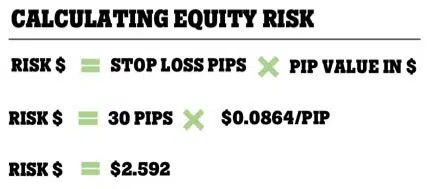
Calculating Risk in % of Account Equity
And as a % of your account.
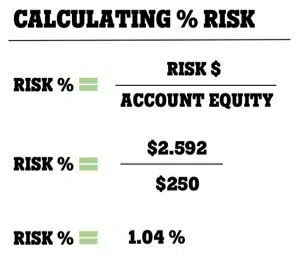
Calculating Risk When Using Leverage
Leverage is a powerful tool, but the level of risk increases on your account as you increase the amount of leverage used on your trade. The leverage used will be included in your calculation as follows. This example using the leverage of 1:10 as an example.
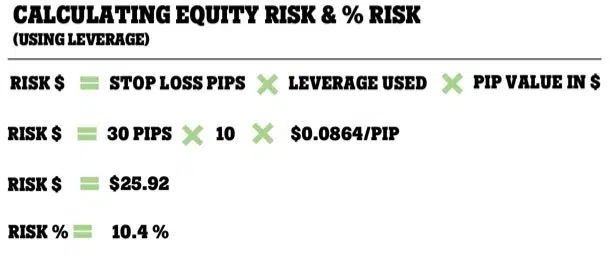
By doing these calculations, you can see where your limitations are going to be, and if the risk will be too high for your account. Regardless of how much you believe in a trade, you will always have trades that go against you, so risk management at a trade level is vital. That said, make sure you set a win-loss ratio that suits you.
Set a win to lose ratio
A trader must have more wins than losses to succeed in trading over the long term. A successful trader generally risks less on a trade than they can make on a trade. There is no exact ratio you can follow because it changes depending on the length of the trade and the pair traded. The goal is to minimise risk as much as possible and to try to maximise the profits.
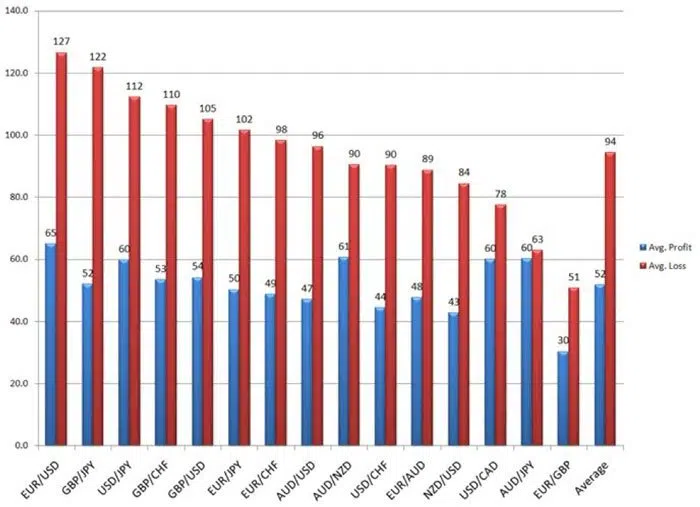
Average Profit vs Average Loss Per Currency Pair – Source: DailyFX
One of the largest US retail Forex brokers, after studying millions of trades made by their clients, found that even though their retail traders were more often right than wrong they were still losing money. They concluded that the sole reason why traders lose money over the long haul is that “they lose more money on their losing trades than they make on their winning trades.”
Risk of Ruin
The risk of ruin refers to the probability that you’ll lose all your trading capital. Let’s assume you risk 5% on every trade. Also, let’s bring in both the concept of risk of ruin and the risk to reward ratio into the example (see Figure 1 below).
The higher the risk to reward ratio is, the less % of trades need to be won.
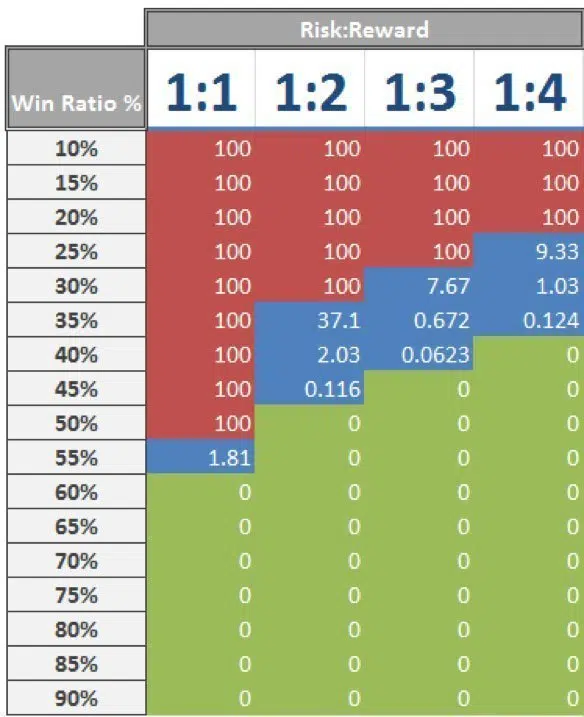
Figure 1: Risk of Ruin Table Example – Risking 5% of equity per trade
Conclusion
If Forex trading is to be a money making business, you must control for risk. You need to reduce risk through sourcing information, keeping track of critical ratios of risk-loss, and understanding where your limitations are. The most successful Forex traders are the ones who know themselves the best. They have created a trading plan that outlines how trading is going to fit into their lives, and how they are going to trade opportunities, and they continue to repeat the same steps within this framework whenever they approach their work.
Stay updated
This form has double opt in enabled. You will need to confirm your email address before being added to the list.

































